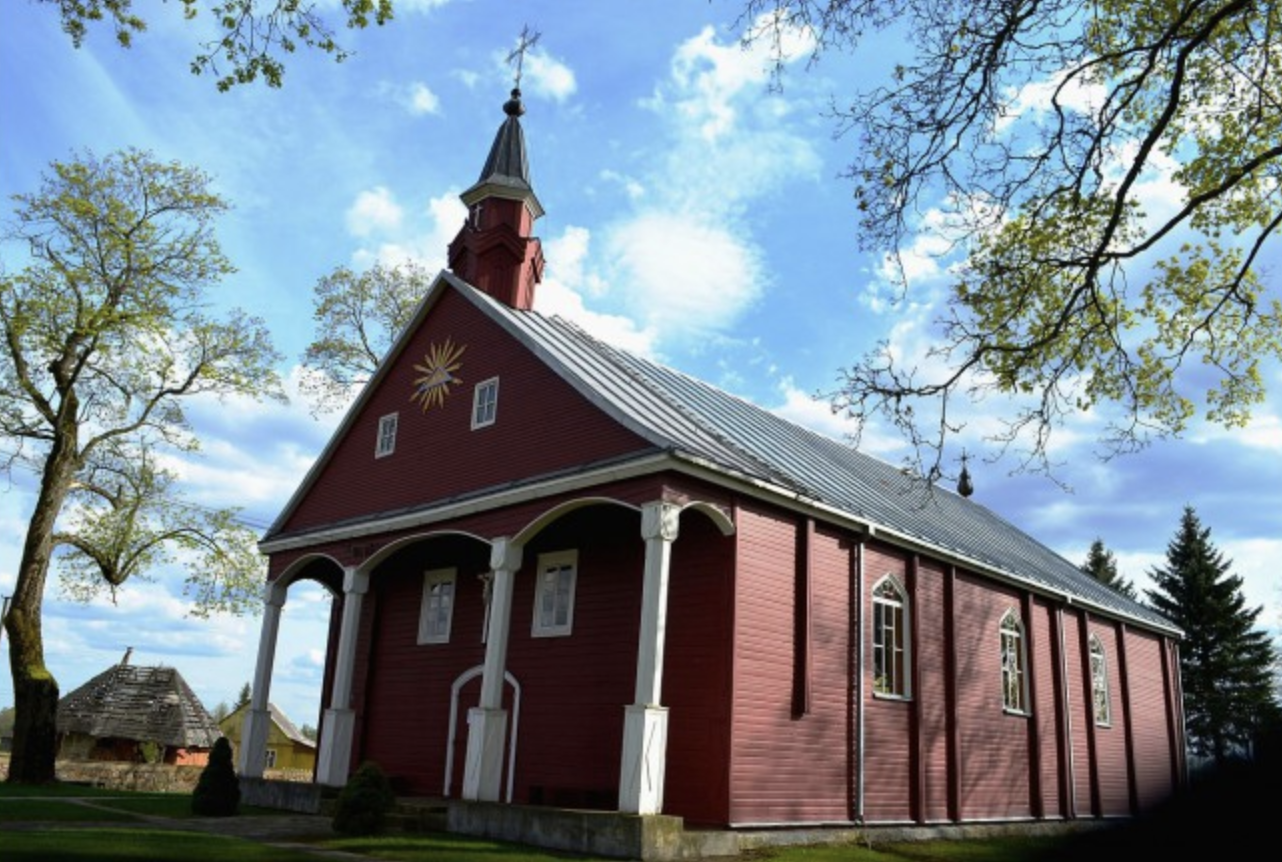Church of St. Matthew the Apostle and Evangelist in Anciškis

143

1

0
0 out of 5
(0 reviews)
The Church of St. Matthew the Evangelist in Anciškis, located in Klaipėda, is an architectural gem blending elements of Classicism, Baroque, and folk architecture. The façade features wooden columns and a high triangular pediment. An impressive belfry and magnificent interior altars, including the main Neo-Baroque altar, enhance the beauty of this sanctuary.
Info
-

Religious Heritage
-
This sacred structure in Klaipėda district embodies architectural synthesis, combining Classicism, Baroque, and folk elements. The rectangular building with a three-sided apse is adorned with an open portico supported by four elegant wooden columns, topped by a high triangular pediment. The grand double wooden doors are decorated with delicate rosettes and diamond patterns, while the Neo-Baroque altars, especially the main one featuring the Lamb of God, showcase exquisite craftsmanship.
The churchyard hosts a wooden belfry and is enclosed by a stone wall. Nearby stands the site of a chapel mentioned in 1744 in Aukštadvaris, which was replaced by a wooden church built by Adomas and Teresė Kozakauskai
between 1783 and 1786. The current structure, rebuilt in 1846, embodies both historical and architectural values, having undergone several restorations and modernizations throughout its existence.
Despite significant repairs and challenges during the Soviet era, when some church lands were lost, the church has preserved its authentic appearance. The belfry houses two bells cast in 1876 in Warsaw and Kaunas, serving as both artistic and historical treasures.
This church, along with its yard adorned with art pieces such as the wayside cross and works by crossmaker Vincas Svirskis, is a prominent cultural and spiritual center in the Klaipėda district, attracting both locals and visiting tourists.
Found a mistake?
Report

 Entertainment
Entertainment
 Food establishments
Food establishments





























 55.437102, 24.305579
55.437102, 24.305579
 Get directions
Get directions









